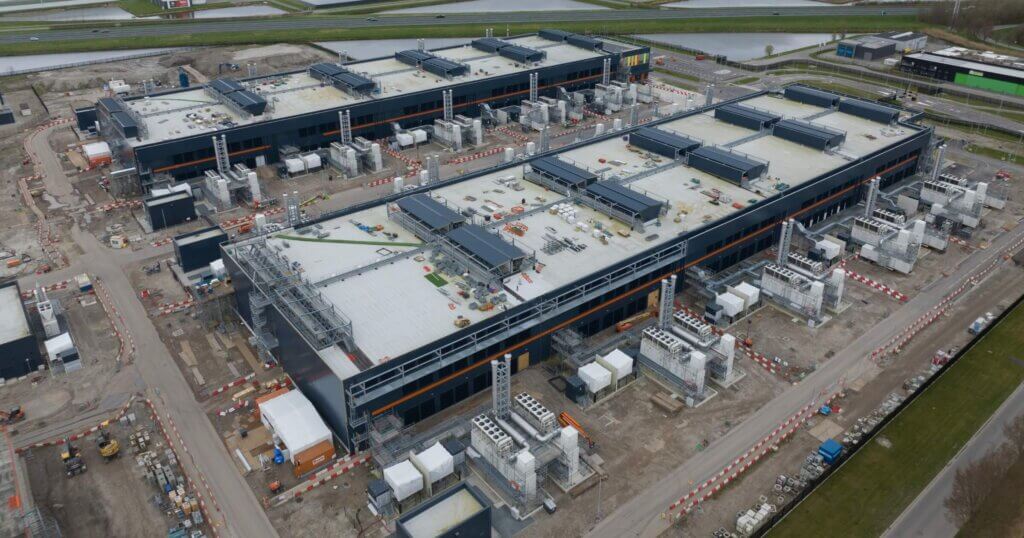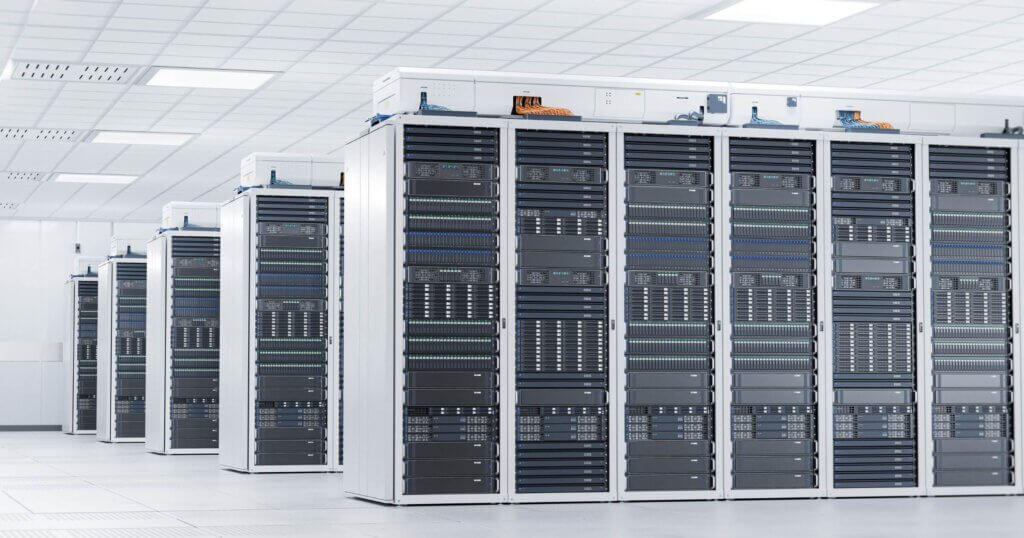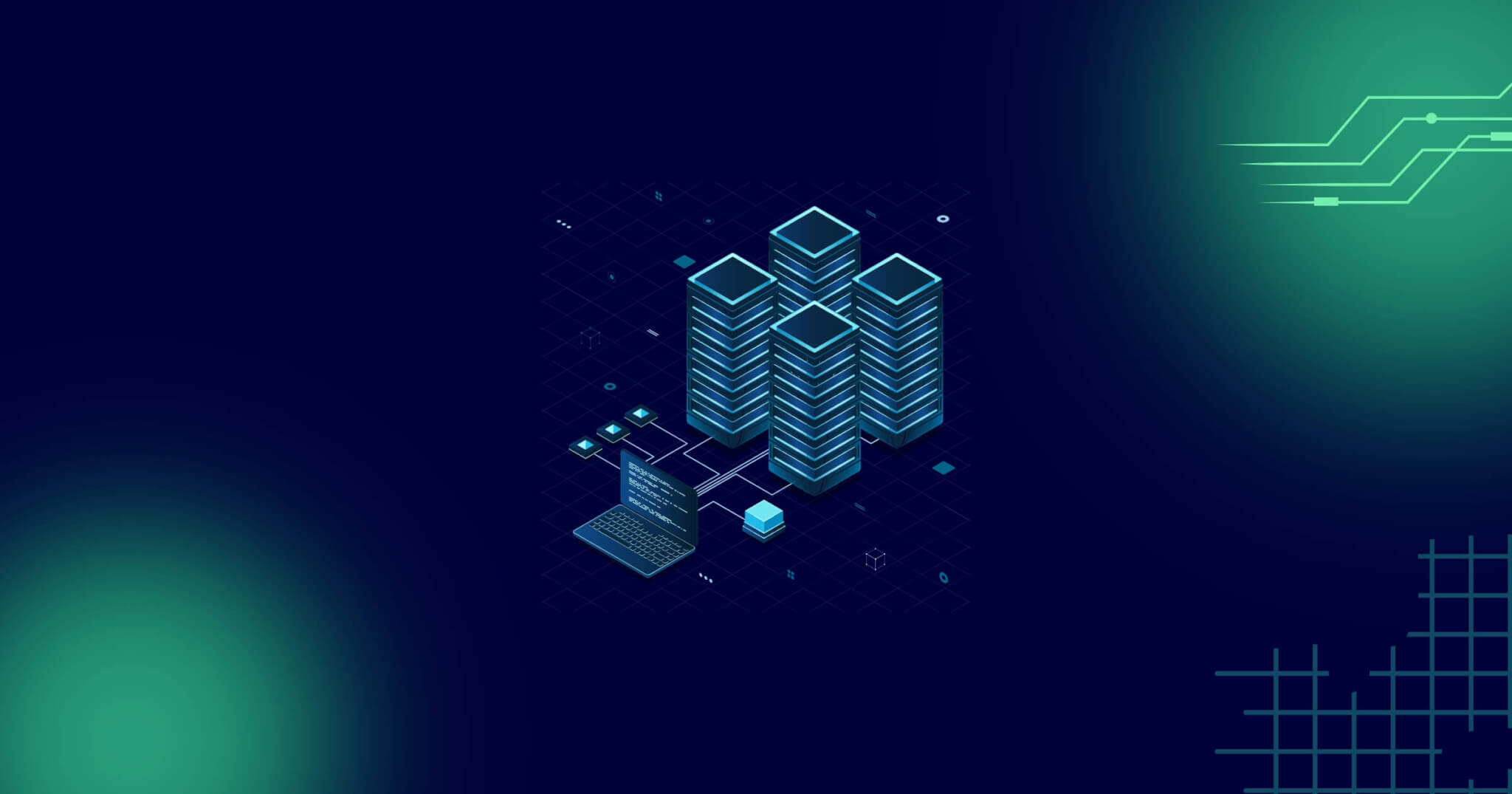Companies are becoming more reliant on cloud storage, digital services, and constant connectivity, which means the demand for data centers is growing fast. For contractors, that opens the door to new projects. But data center construction comes with some unique challenges beyond standard commercial construction. Before building a data center you’ll need to consider the key stages of data center construction and which data center contractors are best for the job.
Quick look:
- Building a data center requires specialized planning, including site selection, security protocols, power, cooling, and scalability.
- Key construction phases include planning, design, permitting, development, and commissioning—each demanding technical precision and collaboration.
- Budgeting goes beyond upfront costs; balancing CAPEX and OPEX is critical to long-term efficiency and performance.
- Leading data center general contractors include Turner, DPR, and HITT.

6 things to consider before building a data center
1. Your data security needs
From the moment the first server is installed, physical and digital security become top priorities. That means considering everything from surveillance systems and access controls to firewalls and network monitoring.
Depending on what kind of data the facility will handle, you might also need to follow strict regulations like HIPAA, PCI-DSS, or GDPR. Skipping those steps can lead to serious legal trouble, so it’s important to build with compliance in mind right from the start.
2. Number of servers you need to run
How many servers the data center needs to support will shape everything from the building’s layout to its power and cooling setup. More servers mean more rack space, cabling, and strain on the infrastructure, so this isn’t something to ballpark.
It’s also worth thinking long-term. If the goal is to grow with demand, the facility should be designed with scalability in mind. Leaving room for extra racks, additional cooling capacity, and future upgrades can save a lot of time (and money).
3. Budget and cost of building a data center
Building a data center is expensive with costs that can climb quickly depending on the level of performance and reliability you’re aiming for. On average, you’re looking at $600 to $1,100 per square foot, with higher-tier facilities (like Tier III or IV) pushing that number even further.
When building data centers, there’s a balance to strike between capital expenses (CAPEX) and ongoing operational costs (OPEX). Investing in energy-efficient systems or modular builds might cost more initially, but could lead to significant savings over time. Knowing where to spend and where to save is critical for budgeting.
CAPEX vs. OPEX: What’s the difference?
- CAPEX (Capital expenditures): Upfront costs like construction, equipment, and infrastructure
- OPEX (Operating expenses): Ongoing costs like energy, maintenance, staffing, and repairs
Smart strategy: Spend more on reliable systems early to reduce operational headaches later
4. Location and space requirements
Where you build a data center matters as much as how you build it. The site needs to be easy to access for maintenance and equipment deliveries, but also secure enough to reduce risks from theft or vandalism. Geography plays a big role too. Areas prone to flooding, earthquakes, or extreme weather may require additional design considerations or reinforcements.
You’ll also want to dig into local zoning laws and regulations early in the planning process. Not every area is zoned for heavy infrastructure or high energy use, and permitting delays can slow the project down. Choosing the right location can help you avoid costly surprises and ensure a smoother build from day one.
5. Power and performance demands
Data centers are power-hungry, and keeping them running 24/7 is non-negotiable. Understanding uptime requirements will help you make better build decisions, whether aiming for basic reliability (Tier I) or near-perfect uptime with full redundancy (Tier IV). The higher the tier, the more backup systems and fail-safes you’ll need to build in.
You’ll also need to make sure the local grid can handle the load. If it can’t, that might mean investing in on-site power generation or beefed-up backup systems like diesel generators, UPS units, or even battery storage. The goal is to keep performance rock-solid, even when the unexpected hits.

6. Cooling systems
Servers generate a lot of heat, and performance (and hardware) can suffer without the proper cooling setup. Traditional systems like CRAC (computer room air conditioning) units are still widely used. Still, many facilities are shifting toward more advanced methods, like liquid cooling or hot/cold aisle containment to reduce energy use.
Stages of building a data center
Planning
The planning stage lays the foundation for everything that follows. It starts with site selection. This includes meeting all the criteria for power availability, connectivity, environmental stability, and zoning approvals. Having access to utilities, risk of natural disasters, and proximity to end users or clients should all factor into the decision.
Next up is defining the project scope. What kind of data center are you building? What’s the expected capacity? Will it need to scale in the future? Getting these details early helps avoid scope creep and costly changes later.
Finally, you’ll need to assemble the right team. That means bringing together architects, engineers, IT specialists, and experienced data center contractors who understand these builds’ technical and operational demands. A strong team from day one keeps the project moving forward smoothly and helps catch potential issues before they become major setbacks.
Design
Once the planning phase is locked in, it’s time to bring the vision to life through detailed design work. This stage starts with architectural and engineering design, where the physical structure and the technical systems it needs to support are mapped out. Think room layouts, structural load considerations, and how everything fits together.
Next comes the electrical, mechanical, and IT layout. This includes power distribution, cooling systems, server rack placement, cabling routes, and backup infrastructure. Everything must be carefully coordinated to ensure performance, safety, and reliability.
Security and sustainability planning also play a significant role at this stage. A well-designed data center balances protection with long-term performance and environmental responsibility, whether it involves biometric access, surveillance systems, or energy-efficient materials and cooling methods.
Obtaining permits
Before construction can begin, the necessary paperwork needs to be in order. Local permitting requirements vary by region, but typically include approval for land use, zoning, electrical systems, and fire safety. Delays here can stall the entire project, so starting early and working closely with local authorities will keep everything in line.
You may also need to complete environmental assessments, especially if the site is near protected land or potentially impacts local ecosystems. These assessments ensure the project complies with environmental regulations and may influence stormwater management or noise control.
Site development
With permits in hand, it’s time to break ground. Site development begins with grading the land, pouring foundations, and preparing the infrastructure to support the facility. This includes laying out roads, access points, and any external structures needed for equipment or cooling systems.
Underground cabling and utilities are also installed during this stage. Power lines, fiber optic connections, drainage systems, and water lines all must be placed precisely. Because these systems are challenging to move once construction progresses, getting them right the first time will help avoid future headaches.
Construction
With the site prepped, the main structural build-out begins. This includes erecting the building frame, enclosing the space, and installing physical components like doors, windows, and access points. Every element, from reinforced floors to raised server room platforms, needs to support the unique demands of a data center.
Once the structure is in place, teams move on to installing HVAC, power, and IT systems. Cooling units, backup generators, electrical panels, server racks, and cabling all come together during this phase. These systems must be installed and tested carefully to ensure long-term reliability. Clear communication and tight scheduling can make or break this build stage.
Commissioning
Commissioning is the final step before the data center goes live. This phase begins with final system tests, where all mechanical, electrical, and IT components are checked for proper installation and functionality.
The facility must prove it can handle full power and data loads without failure, and that backup systems (like UPS units and generators) kick in seamlessly when needed. Load testing is a major part of this step. These stress tests make sure the data center can deliver the uptime and reliability it was built for.
Once everything checks out, the team moves toward sign-off for the operational handover. This includes documentation, staff training, and formal approval from stakeholders. After that, the data center is officially ready to support whatever comes its way.
Top 10 data center general contractors
Choosing the right general contractor can determine the success of a data center project. These industry leaders are known for delivering secure, high-performance data centers on time and budget. Here’s a look at 10 top firms in the space, along with what sets them apart:
1. Turner
Turner Construction is one of the largest construction management companies in the U.S., with extensive experience building mission-critical facilities, including hyperscale and enterprise data centers. It is known for strong project coordination and safety standards.
2. Holder
Holder Construction specializes in complex, high-tech builds. It has delivered over 1,200 data centers across the U.S. They’re a go-to for hyperscale providers and enterprise-level builds with a reputation for speed and efficiency.
3. HITT Contracting
HITT Contracting offers comprehensive data center construction and fit-out services, including white space build-outs and mission-critical upgrades. They emphasize sustainability and have completed projects for major telecom and cloud companies.
4. DPR
DPR Construction is a national leader in data center construction known for its technical expertise and innovation. Its portfolio includes colocation centers, hyperscale projects, and retrofit work, and it strongly focuses on lean construction and BIM.
5. Fortis
Fortis Construction is a trusted builder of complex data centers across the U.S. and internationally. They specialize in hyperscale and enterprise-level facilities and are frequently recognized for their collaborative approach and commitment to safety.
6. Mortenson
Mortenson Construction brings deep experience in mission-critical construction and renewable-powered data centers. They’ve completed large-scale facilities for leading tech companies and offer in-house electrical and mechanical systems expertise.
7. JE Dunn
JE Dunn Construction has delivered secure, high-performance data centers for government, healthcare, and technology clients. They focus on transparency, safety, and strong client collaboration throughout every phase of the build.
8. T5 Data Centers
T5 is unique in that it develops and operates data centers. Its end-to-end services include site selection, construction, and ongoing facility management, making it a strong partner for clients seeking turnkey solutions.
9. Clayco
Clayco delivers full-service, design-build solutions and has completed large-scale data center projects across North America. They integrate architecture, engineering, and construction to streamline the process and deliver speed to market.
10. AECOM
AECOM is a global infrastructure firm with a deep bench in data center design and construction. It brings strong engineering and project management capabilities to large, complex builds, particularly international and multi-site projects.
Bottom line
Building a data center requires thoughtful planning, technical precision, and the right team behind the build. Every decision impacts performance and security in the long term.
Working with experienced data center contractors helps ensure each puzzle piece comes together smoothly. When everyone from the architects to the IT crew is aligned, the result is a facility built to handle today’s demands and tomorrow’s growth.
Want more insights like this? Subscribe to our newsletter for updates on industry trends, contractor tips, and the latest in high-performance construction.



